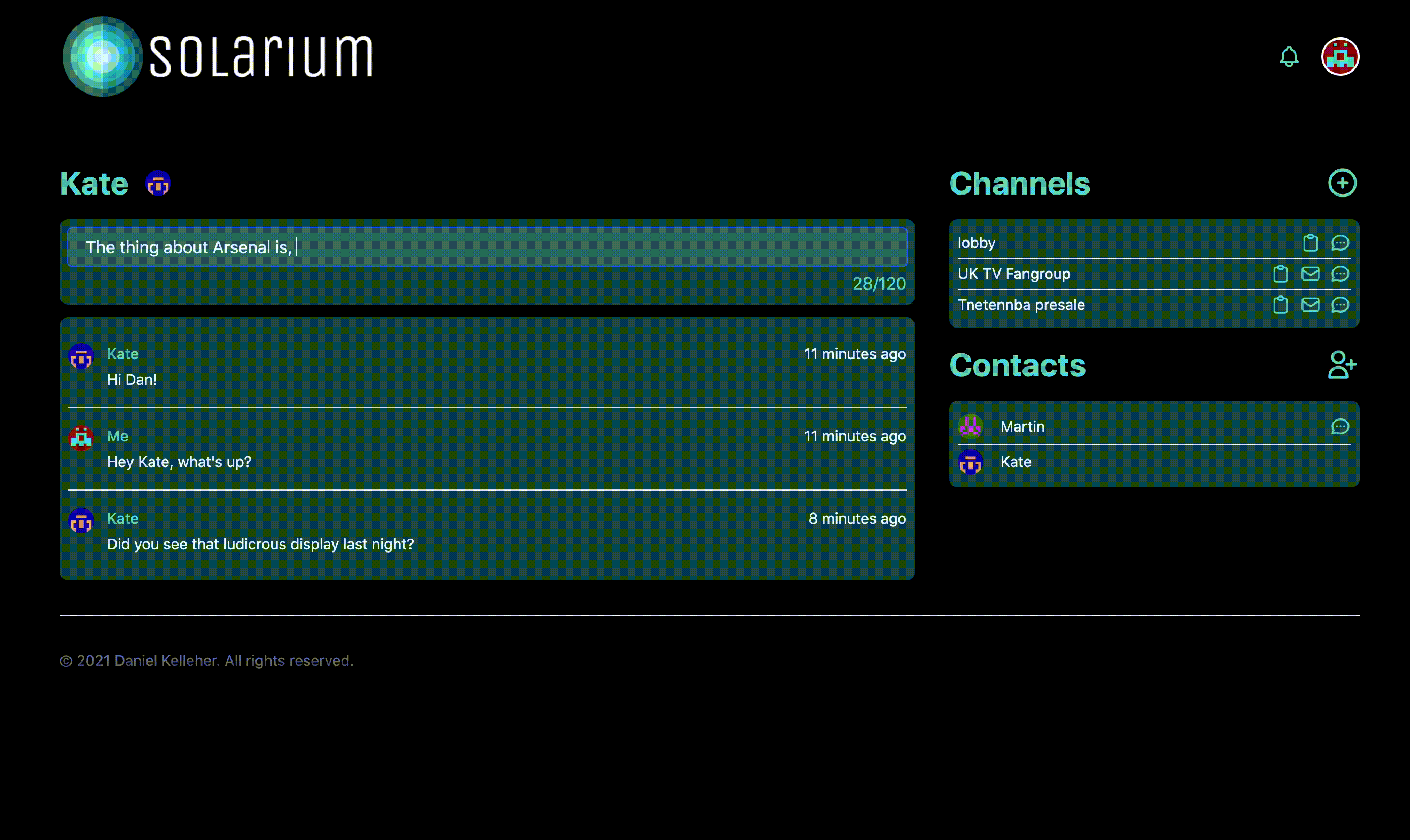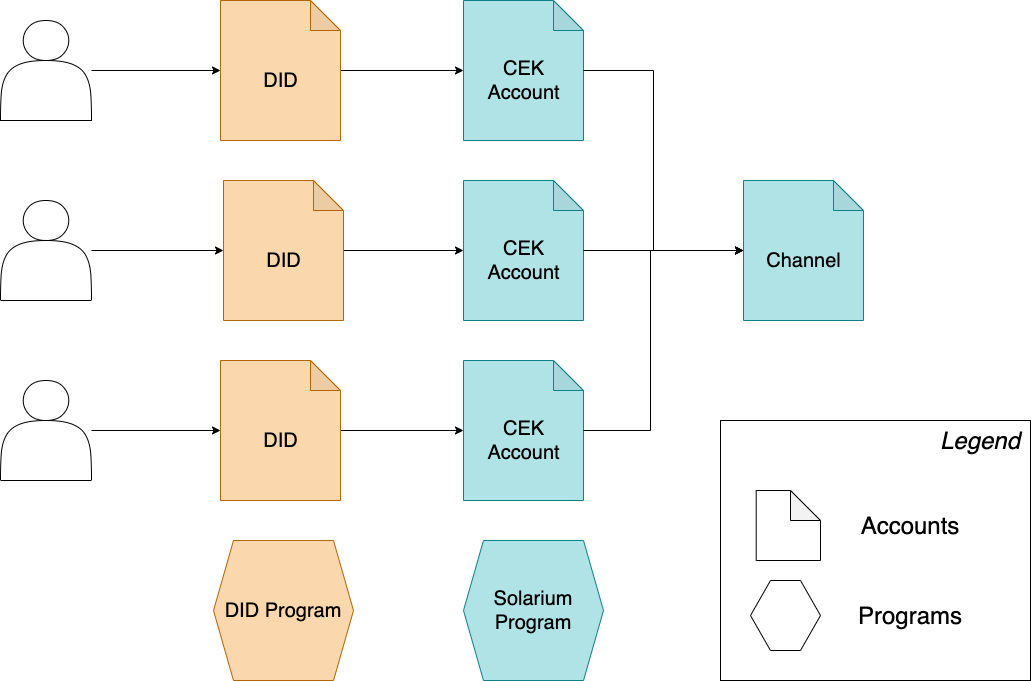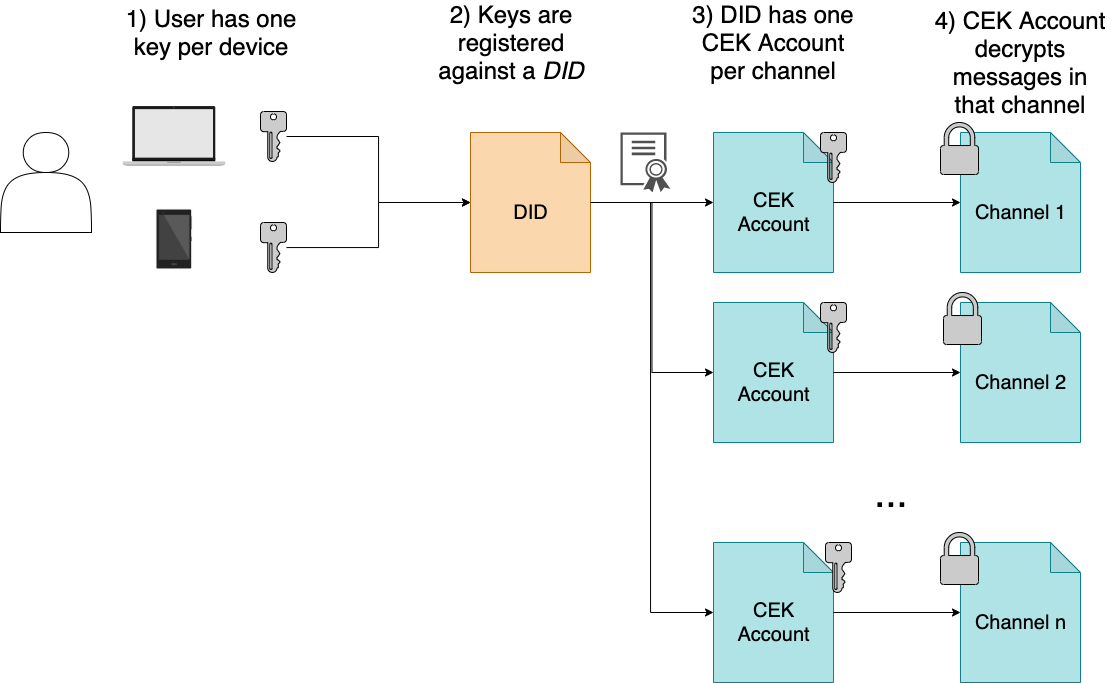Solarium
Solarium is a fully decentralised, end-to-end encrypted, censorship-resistant instant messenger based on the Solana blockchain.
Try it out at http://solarium.chat or install the cli
Contents
Roadmap
Solarium is currently in alpha phase, running on the Solana devnet.
- Q3 2021 upgrade to Signal Protocol
- Q3 2021 beta release Solana Mainnet
- Q4 2021 mobile app
- Q4 2021 multimedia support
Demo
Frequently Asked Questions (FAQs)
What is Solarium?
Solarium is a fully decentralised, end-to-end encrypted, censorship-resistant instant messenger based on the Solana blockchain.
Why did you create Solarium?
We believe that a completely decentralized censorship-resistant messaging solution on a blockchain is a missing link to establishing fully-decentralized trusted communities. For example, current implementations of DEXs and DAOs generally rely on a third-party off-chain communication tools (e.g. Discord, Slack, ...) that break the chain of trust between an on-chain identity and the 3rd party communication platform.
We also believe in Decentralized Identifiers (DIDs) as the basis of a novel internet identity layer that would allow to build these communities from the group up.
How secure is Solarium?
All messages in Solarium are end-to-end encrypted using the XChaCha20-Poly1305 symmetric encryption algorithm, using a 256-bit content encryption key (CEK) that is shared for all messages in a given channel.
The CEK is then encrypted for each member of a channel using the ECDH-ES+XC20PKW algorithm (a CEK-wrapping variant of the Elliptic Curve Diffie-Hellman algorithm). The CEK is encrypted for each key in the user's DID.
The use of the same CEK for all messages in a channel means that Solarium does not at present exhibit perfect forward secrecy (PFS). Future implementations of Solarium (see the roadmap) above will move to the Signal Protocol to support PFS.
How decentralized is Solarium?
The solarium frontend only requires a JSON RPC API endpoint to Solana and a Wallet (currently SPL Token Wallet). The Solarium frontend is currently hosted on IPFS and served via Infura.
How many messages can be persisted within a channel (direct or group)?
Currently, there is a hard-coded on-chain limit of 8 messages that can be persisted per channel. Newer messages will automatically overwrite older ones.
How to I send a new message
When in a direct or group channel, just type your message in the message box and hit RETURN. This will trigger a transaction within the wallet to send the encrypted message to the current channel.
How do add an alias for a participant (represented by a DID)?
Unknown users are represented by their DID within the lobby. You can add an alias by clicking the
icon, either within a channel (e.g. the lobby), or next to the Contacts heading.
How do I create a direct channel with a user?
Direct channels are automatically generated when a Contact alias is added for a DID. Please note that it's necessary for both parties to add each other as a contact alias in order to have a bidirectional conversation
I've created a direct chat, but the other party is not able to see it.
It's necessary for both parties to add each other as a contact alias in order to have a bidirectional conversation.
How do I create a group channel?
You can create a new group channel by clicking the
icon next to the Channels heading. The resulting
modal will ask for a channel-name. Please note, that the channel-name is persisted on chain and cannot be changed later.
I've created a group channel, how can I invite others to it?
New channels have the creator as the sole member. The invitation is a two-step process:
-
Invite an existing contact alias to your channel by clicking the
icon next to a group channel and selecting the alias to invite. Please note, inviting a member twice will result in an error message being shown.
-
Sending an invite link to the newly invited alias: Clicking the
icon next to a group-channel will copy a universal invite link for the given channel, which will need to be shared with the invited user. Clicking the invite link will add the channel to the Channels list of the invitee. Note: The invite link will ONLY work for users that were previously invited by performing step 1. It will have no effect for everyone else.
I've invited a contact to my group channel, but they cannot find it. What's going on?
After inviting an alias to a group channel you'll need to share the group-link with the new member. See "I've created a group channel, how can I invite others to it?". step 2.
Can I use Solarium on Mainnet?
The current version of Solarium is in Alpha-Phase and works against the Solana Devnet. This allows for an easy onboarding experience, including an automatic airdrop of SOL. An Beta-Release on Mainnet is planned shortly according to our roadmap.
Will there be a mobile App for Solarium?
We plan to release an Solarium Mobile App at the end of the year.
Getting started
To contribute to Solarium, please check out the code of conduct.
Program
To build the Rust Solana program, please ensure you first have the Solana tool suite installed locally by following the steps here.
Once Rust and Solana are installed, build using:
cd program
cargo build-bpfRun the program functional tests using:
cargo test-bpfClient
The Solarium-JS client is an SDK that can be used to integrate browser and NodeJS applications with Solarium, and is available on [NPM].
To build and test the client locally,
nvm install- Install the dependencies
cd client
yarn
- Build using:
yarn build- To run end-to-end tests, you must first compile the solarium Rust program (see Program above)
In one shell, run:
yarn start-validatorIn another shell
yarn testCLI
The Solarium CLI is a command-line instant messenger using NodeJS. To install it:
yarn global add solarium-cli
solarium --helpThe CLI does not require the Solana tool suite to be installed locally.
If Solana is not installed locally, a new private key will be generated the first time
Solarium is used, and it will be stored in $HOME/.solarium.
If Solana is installed locally, the default Solana wallet, stored at $HOME/.config/solana/id.json
will be used for signing and encrypting transactions.
To build the CLI locally, install nvm and yarn as above, then run:
cd cli
yarn
yarn buildBy default, the CLI runs against the devnet chain.
Browser UI
The browser UI, available at https://solarium.chat, is hosted on IPFS and pinned by Infura.
To run it locally, install nvm and yarn as above, then run:
cd ui
yarn
yarn startBy default, the browser UI runs against the devnet chain.
Technical Details
Solarium is based on two important concepts: Identities and Channels. Both are represented as Accounts on the Solana blockchain.
Identity
An Identity is your personal avatar on-chain. You can associate this identity with multiple keys. Any key registered against your identity can access your messages and send messages on your behalf. This is the cornerstone for multi-device support in Solarium, and allows for key recovery and custody.
Identities in solarium use the W3C Decentralized Identity (DID) standard. They are therefore fully standardised and portable, and usable outside of Solarium.
Channels
A Channel is an encrypted store of messages between two or more users. There are two types of channel:
- Group Channels have any number of members and are referenced by name and address. Users are invited to group channels by other members.
- Direct Channels have two members only. Their address is derived from the identities of the members using program-derived addresses (PDAs).
Group channels can be public (with a known inviter authority) or private (invite-only).
Security
E2E encryption
All messages in Solarium are end-to-end encrypted using the XChaCha20-Poly1305 symmetric encryption algorithm, using a 256-bit content encryption key (CEK) that is shared for all messages in a given channel.
Note: The use of the same CEK for all messages in a channel means that Solarium does not at present exhibit perfect forward secrecy (PFS). Future implementations of Solarium (see the roadmap) above will move to the Signal Protocol to support PFS.
The CEK is then encrypted for each member of a channel using the ECDH-ES+XC20PKW algorithm (a CEK-wrapping variant of the Elliptic Curve Diffie-Hellman algorithm). The CEK is encrypted for each key in the user's DID.
The set of encrypted CEKs are then stored on-chain in a CEK Account for the user. The user therefore has one CEK Account for each channel that they are a member of. CEK Account addresses are derived from the user's DID and the channel address using program-derived addresses (PDAs).
This has the benefit that only one address (the channel address) needs to be known, in order to send or receive messages, rather than two (the channel and CEK account). However, it has a significant downside: It is possible to discover if a user is a member of a group if you know their DID address and the channel address. Future versions will mitigate this by storing the association between a channel and a CEK account in an encrypted on-chain address book instead of using PDAs.
Message signing and repudiability
The above section discusses message encryption and decryption but does not discuss message signing, i.e. proof of provenance of a message.
The message content in Solarium is not directly signed, i.e. the data itself, once decrypted, does not contain details about the sender. Instead, the blockchain transaction that adds the message to the channel is signed by the sender. The Solarium program ensures the following statements are true:
- The sender key of the transaction currently belongs to the DID of the stated sender of the message
- The sender DID is a member of the channel that the message is being posted to.


